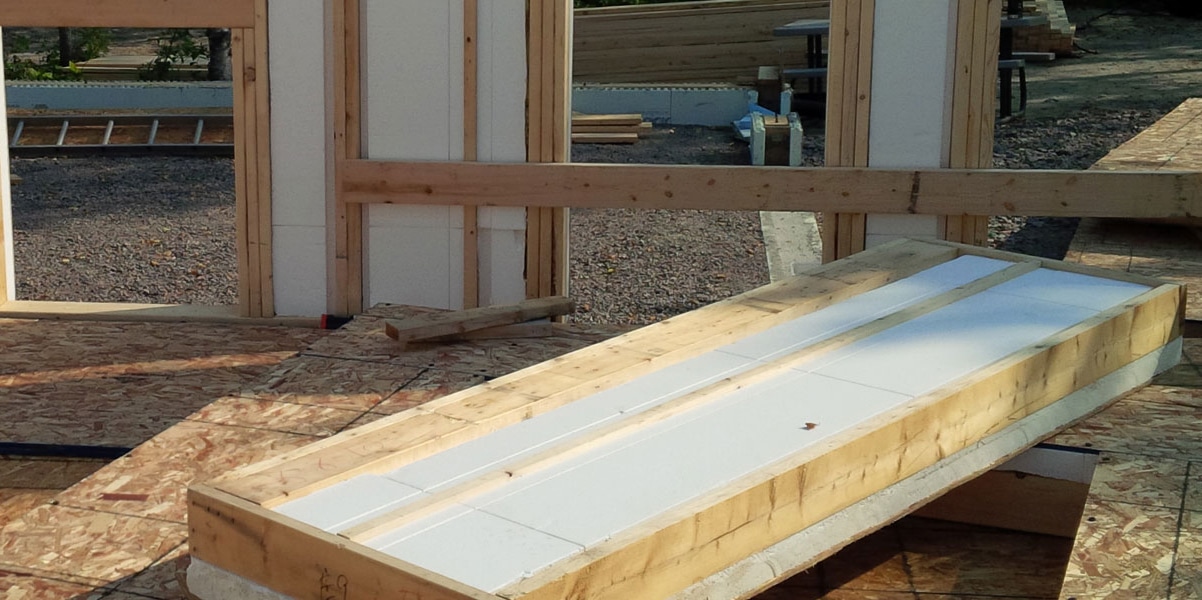Lifting or relocating your SIP home is a simple process if you know what to expect. In this article, we give you five tips to ensure your SIP project is smooth and successful.
What are SIPs?
Structural Insulated Panels are a construction system typically used for residential or light commercial buildings. Oriented strand board –– a material like particle board –– encases a foam core, providing stability and energy-saving insulation. SIPs are factory-produced under controlled conditions, and manufacturers can custom fabricate them for nearly any design. The use of SIPs in construction results in a durable, cost-effective, and energy efficient building system.
Benefits of Building with SIPs
You’ll find many benefits to owning a SIP home:
- Energy Efficient – The insulated panels reduce energy use and cost, saving your wallet as well as reducing your environmental impact.
- Fast Construction – Wood panel homes are precisely designed and manufactured, reducing assembly time and saving on labor costs.
- Design Flexibility – Because wood panel SIP homes can be custom designed, architects and homeowners can reap all the benefits of this building system no matter the layout or design of their homes.
Tips for Lifting or Moving Your SIP Home
SIP homes are sturdy and long-lasting, energy-efficient, and cost-effective. SIP builds are ideal for homeowners looking for a home that will last.
For a variety of reasons, you might be thinking of lifting or moving your SIP home. Lifting and relocating your house can increase square footage, mitigate flood damage and save on your insurance, and allow you to continue living in your house on your new dream property.
Regardless of the reason you’re choosing to lift or move your wood panel home, it’s important you prepare yourself for the project. Below we list our top five tips to help your big move go as smoothly as possible.
-
Plan New SIP-Friendly Foundation
When you move your wood-panel SIP home, you need to plan for a new foundation. You can make plans with your general contractor to determine what works best for your budget and your home’s needs on your new property.
Keep in mind that you should not install SIPs directly on concrete. As you work out a plan for your home’s new foundation, your contractor will guide you towards the best options for your house. When budgeting for your home’s move, plan for expenses associated with constructing a SIP-friendly foundation.
-
Water and Electric Hookups
Unlike traditional building methods or systems, the walls behind a SIP home are filled with solid insulation. That means prior to fabrication, a homeowner or architect should notify the manufacturer where electrical, plumbing, or ductwork will be within the walls. After fabrication, adding these elements is costly and inconvenient.
When preparing a SIP home lift or relocation, ensure your electric and water lines will hook up to existing wiring and plumbing. Your contractor should determine the best way to execute the lift without unnecessary changes to your panels.
-
Hire a General Contractor with SIP Expertise
SIP homes are unique. Unlike most other homes, the inner walls are solid because of the insulating foam. The pieces are manufactured offsite, which makes construction less time-consuming and more cost-effective. However, off-site fabrication makes altering the panels expensive and difficult.
Hire a general contractor with plenty of experience working with SIP homes. They have the expertise to prevent costly mistakes associated with SIP home alterations.
-
Prepare Your SIP Home
Your lifting contractor will be responsible for most of your SIP home’s lift or relocation. They’ll be the ones planning and executing the project. But you are in charge of preparing your home before your contractor arrives. Below are a few to-dos before the big day.
- Remove yard décor, outdoor furniture, and children’s toys
- Remove decking and landscaping surrounding your home
- Disconnect plumbing, electric, and your HVAC unit; move your HVAC into storage
- If moving, acquire necessary permits from local government
Do your part on the front end, and the day of the lift or move can move forward as scheduled.
-
Choose a House Lifting Contractor You Can Trust
Choosing the right house lifting or house moving contractor is the most important aspect of the entire project. Your home is your greatest investment. As such, you’ll want to work with a lifting contractor with experience, integrity, and the equipment to get the job done.
DeVooght House Lifters has been lifting and moving homes for decades. The knowledgeable team works with you and your general contractor to give you a successful and stress-free move. DeVooght utilizes modern equipment and years of hands-on house-lifting experience to tackle any SIP moving project, no matter how big or small.
When it comes to your home, you want to work with the very best. DeVooght House Lifters guides you through each step of the process so you can lift or move your SIP home with confidence. Contact DeVooght House Lifters to speak with a team member who can get you started on your SIP home lift or relocation today!

